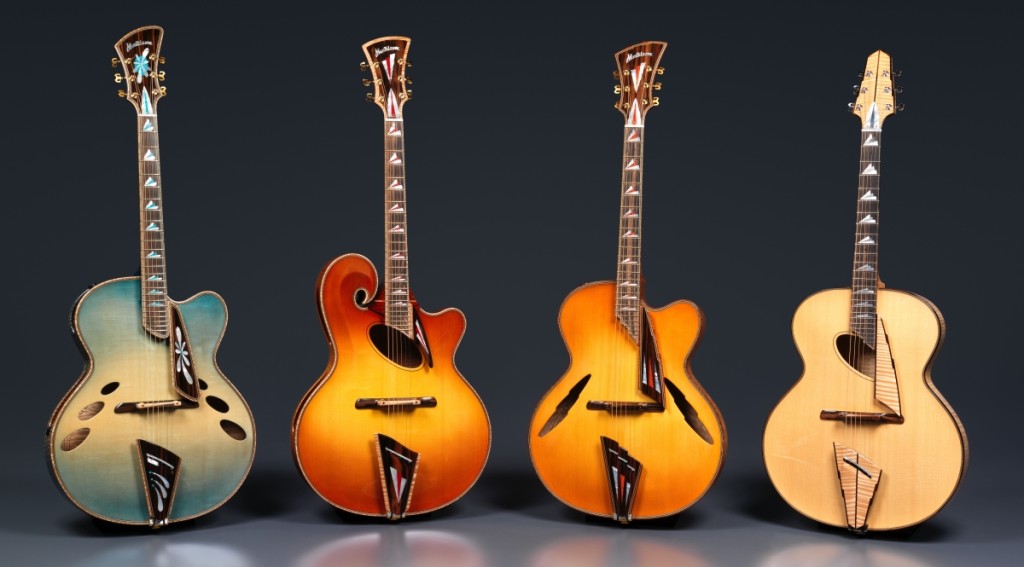-664x1024.jpg)
The Metropolitan Museum of Art reopened its André Mertens Galleries for Musical Instruments on March 22 after a two-year renovation and reinterpretation of the galleries’ narrative. The new presentation, “The Art of Music,” allows viewers to explore one of the world’s most diverse and important collections of musical instruments through a global lens. Instruments of different cultures are now arranged together, highlighting commonalities in music-making across cultures. Dr Bradley Strauchen-Scherer, associate curator in the Met’s department of musical instruments, brings us up to speed on what was involved.
Weren’t the music galleries refurbished eight years ago?
In 2010, one of the five galleries was closed for eight months as part of a museum infrastructure project focused on roof work. The department was able to use this opportunity to enhance the displays and refresh the appearance of this gallery, then devoted to European instruments, but a full renovation was beyond the scope of the project. Our recent closure has enabled us to carry out major construction work across all our galleries to improve the aesthetics and function of these spaces. Most exciting to us as curators, it has enabled us to completely recast the narrative of the galleries to engage more fully with the Met’s encyclopedic collections of art from around the world.
How and when did the collection of musical instruments at the museum originate?
The Met’s collection began in 1885 with a gift of 44 instruments from Joseph Drexel. This was followed in 1889 by a much larger gift of nearly 300 instruments from Mary Elizabeth Adams Brown, who ultimately built up a collection of more than 3,600 instruments from around the world for the museum. Brown was a remarkable pioneer in the field and she was part of the circle of collectors and scholars who established public displays of musical instruments in museums in Europe and the United States.
What do you see as the overarching narrative of the Met’s collection of musical instruments?
The “Art of Music” presents 4,000 years of musical instruments from around the world in dialogue with art from across the Met’s encyclopedic collections. Our new narrative illuminates the interconnected world of music, art, innovation and society. The displays are punctuated throughout with related objects and paintings that illustrate the centrality of music and instruments in cultures worldwide.
What are some of the physical changes visitors will see?
The appearance and ambiance of the galleries has been transformed by extensive construction work, redesign and redecoration. Work to reveal and restore the original herringbone parquet wood floor and clean the masonry portals and balustrades of the balcony galleries harmonizes with the Beaux-Arts heritage of the Morgan Wing. Sight lines have been opened up within the galleries to create vistas that enable viewers to draw links between instruments and artwork across centuries and cultures. Many instruments are shown in freestanding cases that allow them to be viewed from all sides and all are dynamically displayed on bespoke mounts.
What is the oldest instrument in the Met’s collection? The most unusual?
A group of iron bells from Iran dating back to the first millennium BCE are the earliest musical evidence of the ancient world displayed in the galleries. One of the more unusual is made from narwhal tusk and combines a flute and an oboe in the form of a walking stick. This extraordinary instrument was made by the celebrated wind instrument maker Georg Heinrich Scherer in Germany in the 1750s and was associated with Frederick the Great, king of Prussia, who was an accomplished amateur flute player.

The “Four Seasons” quartet of archtop guitars, conceived as a complete musical ensemble of instruments.
Are any of the instruments playable and able to be heard as well as seen?
A number of important instruments in our collection are playable. During our gallery renovation, our 1830 Thomas Appleton pipe organ received extensive conservation and specialist maintenance to preserve its sonic and visual beauty. Our string quartet comprising two Stradivari violins, a Stainer viola and a Vuillaume cello is periodically played in concerts at the Met. Visitors to the galleries can hear instruments from the collection on two audio and video kiosks and an audio guide featuring more than 50 video and audio clips of the instruments on display.
What is the “Four Seasons” quartet?
It’s an exquisite quartet of archtop guitars that was conceived as a complete musical ensemble of instruments. Each instrument has its own individual musical voice and functions as a beautiful solo guitar as well as forming part of the group. The sound of each guitar is given its respective voice by the selection of woods, the way it was carved, the shape of the body and the configuration and placement of its sound holes. Each is also visually distinctive and is decorated to reflect the mood of one season of the year.
—W.A. Demers




